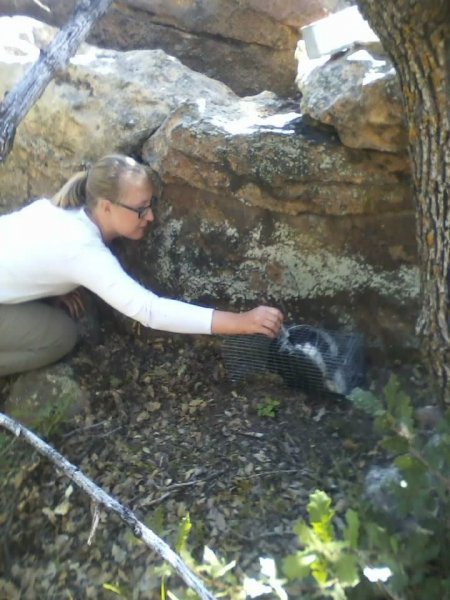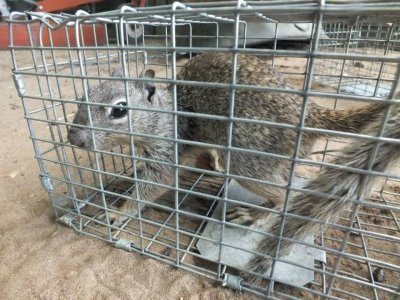Original Author: Lorna Hutchison, Volunteer
Lorna Hutchison, new volunteer for the Argyll & Trossachs project area, tells us the reasons she has recently started volunteering for the project.
As an undergraduate at university it was the hands-on, practical side of my biology degree that got me into conservation. Now having studied a Master’s degree in Sweden and worked in New Mexico, I’ve come home to see what I can do here in Scotland to help our native wildlife survive against threats of foreign diseases and invasive species. In Sweden I studied conservation biology and became especially interested in disease ecology, invasive species and wildlife management. I then moved from Sweden to a field station in New Mexico to work as a field technician and research assistant studying rodent populations and testing two methods for controlling the plague (Yersinia pestis) a.k.a. Black Death. There I gained a lot of hands-on experience trapping and handling rats, mice, squirrels and chipmunks, as well as the odd striped and spotted skunks (striped skunk below). Next, after 2 and a half years away I decided it was time to come home and what better way to get re-acquainted and work my way onto the career ladder in this country than to volunteer? Working with the Scottish Wildlife Trust on their Saving Scotland’s Red Squirrel (SSRS) project seems like a natural progression from my recent work and experiences.

Growing up in Scotland of course I saw red squirrels, but I’d always had to go looking for them. But in Sweden, there are only red squirrels so it was suddenly so exciting just to see a red squirrel darting out from behind a tree. For people in Sweden, and much of the rest of Europe, this excitement seems odd because they don’t have grey squirrels and their red squirrels are relatively common and healthy compared to ours. They aren’t battling a larger competitor, nor the diseases brought by them, like our red squirrels are. Squirrel pox is a horrible, debilitating disease that kills the red squirrels that is carried by (some) grey squirrels which seem to be immune to the disease. If we could reduce the grey squirrel population we could also bring down the incidence of disease helping the native red squirrel in two ways.
When I was working in New Mexico, I would see the Rock Squirrels (Spermophilus variegatus, below) basking on a rock at the base of the canyon wall either enjoying the sunrise or sunset. These squirrels however, are battling the plague: a disease spread by fleas and brought from Europe. So there’s fair bit of somewhat unexpected symmetry between my work in New Mexico and what I’m getting into here in Scotland volunteering with SSRS. It’s a fantastic opportunity to be involved in this project and it’ll be really exciting to finally get this field season underway. My hope is that I’ll be able to contribute something towards the plight of the red squirrels even in just a small way. One of these ways is by reporting my squirrel sightings to an online database used by the SSRS to monitor the squirrel populations through citizen science. It’s a very useful tool and fun too.

But I’m not just nuts about squirrels. I like a lot of other animals too, so far I’ve worked with insects and marine invertebrates as well as mammals, and over my career I’d like to think I’ll be able to vary the work that I do but overall I want to be able to have a significant and long-lasting impact on the survival of native species in my native country. I’d like to work abroad again but always with the view of bringing my knowledge home and putting it to good use here.
